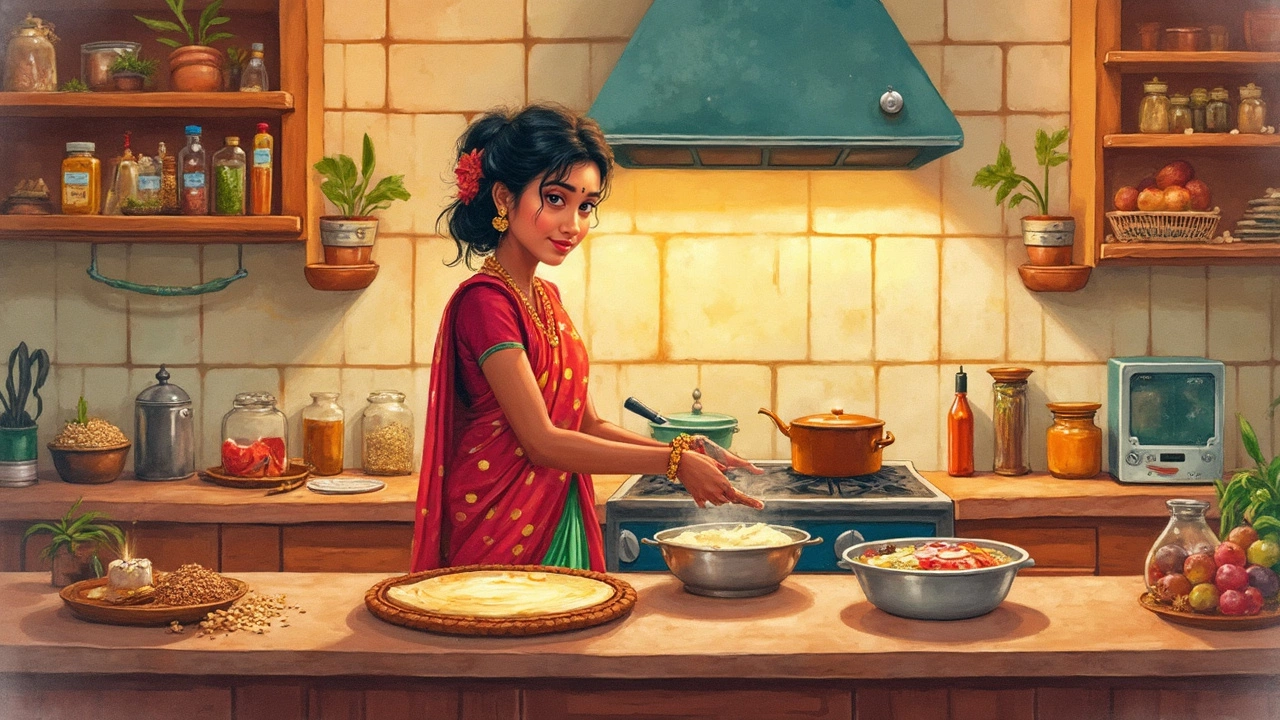How to Ferment Dosa Batter – Simple Steps for Perfect South Indian Crepes
When working with dosa batter fermentation, the process of letting a rice‑urad mixture develop natural yeast and lactic‑acid bacteria. Also known as dosa starter, it transforms raw ingredients into a tangy, airy batter ready for cooking. Adding curd, a source of lactic bacteria speeds up the acid build‑up, while a warm spot of around 30‑35°C, ideal fermentation temperature encourages microbes to multiply quickly. The classic blend of rice and urad dal, starchy grains that feed the microbes supplies the carbs needed for a strong rise. Together, these elements make the magic happen.
Key Factors That Influence Fermentation
First up, the rice‑urad ratio matters. Most home cooks stick to 3 parts rice to 1 part urad dal because the extra rice gives a smoother texture, while the dal adds protein that supports a healthy microbial community. If you shift the balance too far, the batter can turn gummy or stay flat. Second, timing is everything. In a typical Indian kitchen, batter ferments overnight (8‑12 hours). In cooler climates you might need 14‑16 hours or a dedicated warm nook. The rule of thumb: look for tiny bubbles on the surface and a pleasant sour aroma – those are signs the microbes have done their job.
Third, the starter culture. Some families add a spoonful of previously fermented batter, which acts like a yeast inoculation. Others rely solely on curd or even a pinch of commercial yeast for a speed boost. Either way, the starter provides the initial population of microbes, reducing the time needed for natural fermentation. Fourth, the container. A non‑reactive bowl (glass or stainless steel) lets the batter breathe while keeping out unwanted odors. Cover it with a cloth rather than a tight lid; the microbes need a bit of airflow to stay active.
Finally, temperature control. If your kitchen is chilly, wrap the bowl in a blanket, place it near a warm stove, or use a low‑heat oven with the light on. Too much heat (above 40 °C) can kill the good bacteria and lead to off‑flavors. Keeping the environment steady at 30‑35 °C is the sweet spot for a balanced rise and mild tang.
Now that you know the main pieces, let’s talk troubleshooting. If the batter smells overly sour or fermented for more than 24 hours, it’s likely over‑fermented – thin it with a bit of water and use it for pancakes or pancakes instead of dosas. If there are no bubbles after 8 hours, check the temperature and consider adding a tiny pinch of baking soda or a fresh spoonful of curd to jump‑start the process. Remember, each batch teaches you a little more about how your local climate interacts with the microbes.
Beyond the basics, there are a few pro tips that can elevate your batter. Soaking the rice and dal for 4‑6 hours before grinding improves the texture and gives the microbes a head‑start on breaking down starches. Grinding to a smooth, slightly gritty consistency (about the texture of fine semolina) ensures even fermentation. After grinding, let the batter rest for 30 minutes before covering – this short pause helps the enzymes start working.
When you finally pour the batter onto a hot pan, the fermentation’s work shows up as fluffy edges and a light, crisp center. If you prefer extra crispness, let the batter sit a few minutes after spreading; the surface will dry a touch, creating that classic crunch. If you want extra fluff, a pinch of baking soda added right before cooking can give a quick lift – just don’t overdo it, or you’ll get a metallic taste.
All these details tie back to our core idea: how to ferment dosa batter isn’t just a single step, it’s a chain of small choices that each push the batter toward the perfect balance of sour, airy, and flavorful. Below you’ll find articles that dig deeper into each of these aspects – from the science behind curd’s role to quick‑ferment hacks for busy mornings. Explore the collection to sharpen your technique, troubleshoot common issues, and discover shortcuts that keep your dosa cravings satisfied without waiting forever.

Fast Dosa Batter Fermentation: Tips You Need to Try
Speeding up dosa batter fermentation can be a game-changer for quick home cooking. This article shows you quick techniques to get that crispy dosa in less time, like using warmth from your kitchen gadgets or adding grains for a boost. You'll discover how tweaking little steps can make a big difference.